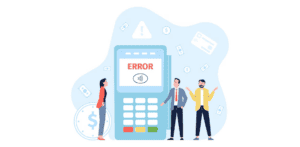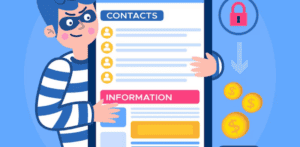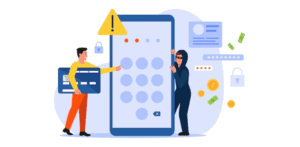
Your merchant account is your lifeline through which you accept payments from clients. Whether you operate an online store, a subscription service, or a brick-and-mortar restaurant, this account assures easy card transactions. But what if your provider suddenly freezes or terminates it? Panic ensues, cash flow dries up, and customer confidence is at stake.
A frozen account translates to your money not being available for a while. A terminated account, on the other hand, cuts off your ability to process payments altogether. These actions often come without warning—and the consequences can be severe.
This blog is going to take you through what to do when that happens. You’ll learn why merchant accounts are frozen or closed, how to respond without stressing, and the alternatives you can consider. And most important of all, you will learn how to not make this mistake again. No matter if you’re a small-business owner or managing a large-sized business, these steps will help you get back on your feet fast.
Common Reasons Your Merchant Account May Be Frozen or Terminated
Merchant account freezes and closings don’t just happen by chance. Providers track behavior vigilantly, and move decisively when they observe any risk. Knowing the most common triggers can help you respond in time or prevent them from happening in the first place.
Excessive Chargebacks
Perhaps one of the most popular reasons is when the chargeback ratio is high. Many providers adhere to stringent rules imposed by networks like Visa and Mastercard. If more than 1% of your transactions become chargebacks, then your account is flagged. Continued violations can result in immediate account suspension or termination. A large number of chargebacks is a sign of risk of fraud or of unhappy customers.
Suspicious or Fraudulent Activity
Generally, if there are suspicious activities spotted by the providers, the merchant account would get terminated. For example, this could involve unexpected sales volume, high-value transactions, or unusual payment sources. If your account activity doesn’t match your business model, it’s going to raise red flags. A legitimate business can seem risky if changes are not communicated in advance.

Breach of Terms of Service
Every provider has rules. Selling prohibited goods, providing misleading business information or not reporting new locations or websites may cause action to be taken. Occasionally, simple things such as expired papers and owner change could be the reason for term breach and risk of account. Hence, make sure that you understand the terms of service clearly and strictly adhere to them.
High Refund Rates or Customer Complaints
Too many refunds are a sign of a miserable customer experience. High return rates tend to be signs of quality product problems or policies that aren’t transparent. If complaints start stacking up—especially on platforms like the Better Business Bureau—your account credibility may suffer.
Immediate Actions to Take After Your Merchant Account Is Frozen
A frozen merchant account is a nightmare — but panicking will only make it worse. So don’t panic, but do take calm and measured actions to figure out what went wrong and to begin to repair the damage.
Don’t Panic — Just Be Professional
It’s understandable to be frustrated, especially if the freeze comes out of nowhere. But there are risks in reacting emotionally. Keep it professional when you talk to them. Your aim is to settle the issue and not to exacerbate it.
Contact Your Merchant Account Provider
Contact your provider immediately. Ask a specific reason for the account freeze. Ask for proof or a written synopsis of the problem. Understanding specifically what caused your freeze can help you in collecting the correct evidence and enacting an effective plan.
Review Your Merchant Agreement
Every merchant agreement includes terms related to account freezes and terminations. Read the fine print in detail. Search for clauses on chargeback limits, banned items, verification steps and dispute processes. Once you know your rights, you can take a proper response.
Collect Transaction and Financial Data
Start to collect records to show that your transactions are valid. These can include:
- Order confirmations
- Shipping details
- Customer communication logs
- Bounced refund and dispute forms
This information can serve to help your case — especially if a freeze was because of suspected fraud or high chargebacks.
These may increase your chances of having your account reinstated — or at least getting access to the money in your account that’s been put on freeze.
How to Respond to a Terminated Merchant Account?

If your account is terminated, the effect is more serious than if your account is simply frozen temporarily. You’re unable to process payments and it becomes much more difficult to be reinstated. But you can mitigate the damage and move forward— if you take the appropriate steps from here.
Request a Reconsideration or Appeal
Most providers let merchants contest a termination. Move quickly; some platforms provide only a brief window for reconsideration. Make a formal request and ask what records are required. Each fact presented should be a strong one for the reversal of the basis of discharge. If the problem was chargebacks, document the measures you have taken to lower chargebacks.” If it was a mistake, explain in full.
Check for Withheld Funds
Terminations often come with a reserve hold—where the provider holds your remaining funds for 90 to 180 days. This protects them in case of future chargebacks. Check your agreement to see when the funds will be released. Ask for a written timeline and confirmation of the amount being held. If you’re unsure about their terms, consult a financial advisor.
Notify Customers (If Necessary)
If there are ways in which customers could experience delays in service or payment issues, communicate that to them. Send a transparent, honest message communicating the problem and how you are addressing it. This means no loss of reputation, no disputes, no chargebacks or refunds. Be upfront and professional.
Getting terminated isn’t the end of your business. Most merchants bounce back by moving forward and finding providers that are a better fit with their model.
Alternatives and Backup Plans
Losing a merchant account can stall your business—but it doesn’t have to stop it completely. There are several options to help you continue accepting payments while you resolve or replace your account.
Apply for a New Merchant Account
Begin by looking for another provider. But let’s be real — lots of processors share data through MATCH (Member Alert to Control High-Risk Merchants). On the off chance that you’re on it, full disclosure helps your credibility. Select a processor that understands your business model, especially if you are in a high-risk industry. Some are more flexible with businesses in verticals like supplements, subscriptions, or travel.
Consider High-Risk Merchant Account Providers
If you are turned down by a traditional provider, try one that specializes in high-risk. These companies deal with businesses that regular processors have marked. They might have higher fees, but they are more forgiving when it comes to chargebacks and abnormal volume. Ensure they are PCI-compliant, trustworthy and have strong fraud detection tools.
Explore Other Payment Solutions
You don’t have to rely only on traditional merchant accounts. You can temporarily switch to:
- Third-party processors like PayPal, Stripe, or Square. They’re quick to set up and ideal for short-term use.
- ACH and eCheck processors, which handle direct bank-to-bank payments.
- Cryptocurrency payment gateways, if your audience is open to it. This is useful for tech-savvy businesses with global customers.
A secondary payment system works as a lifesaver and helps your business to keep running even when the primary processing solution fails. It also leaves time for you to negotiate or appeal, while not losing revenue.
Preventing Future Freezes or Terminations
After you have recovered, the next thing is to protect your merchant account. The best defense is prevention. Take these proactive steps to minimize future risks.
Monitor Chargebacks and Refunds Proactively

Chargebacks are a leading reason for account freeze. Use software to monitor trends in disputes in real time. If a product or offer is responsible for a surge, you can take a few steps. Move quickly, stop the listing, contact any affected customers and offer solutions to the problem. Also, make your billing descriptors clear so customers recognize the charge on their statements.
Maintain Transparent Business Practices
Be accurate and honest about your products, pricing and how soon you can deliver. Deceptive offers, surprise fees or late delivery frequently bring complaints. Have transparent return and refund policies displayed on your website. Teach your team to employ these always. If customers understand the process, they are less likely to file chargeback.
Set up Periodic Audit of Your Merchant Account Activity
Monitor your transaction history on a monthly basis. Seek odd patterns like spikes in volume, international payments or large orders. If anything seems off, let your processor know. Getting there early is a sign of good faith and can prevent a freeze.
Keep Up with PCI Compliance and Processor Regulations
Compliance is not simply a checkbox. Secure, encrypt and update your payment systems. Educate your team about PCI rules and fraud safeguards. Moreover, you should keep up with your provider’s terms and policy updates. Without formal notification, they can alter chargeback thresholds or risk policies.
By staying in compliance, being transparent, and being proactive, you stay in good standing with your account — and won’t run into the same problems down the road.
When to Get Legal or Professional Help?
Occasionally, resolving a frozen or terminated merchant account is more than you can do on your own. Professional guidance is necessary at times. Here are some professional help you can consider:
Hire a Payment Consultant or Industry Expert
A merchant account advisor knows the system very well. They can assist you as you appeal terminations, negotiate with processors and locate other avenues. Consultants usually have relationships with providers and are able to determine who is the best fit for your business model, even if you’ve been given the “high-risk” label.
They’ll also look back at your past activity, propose compliance fixes, and assist you in clearing up any issues that might cause you to get frozen again.
Speak to a Lawyer for Fund Withholding or Contract Disputes
If your provider is holding a big reserve — or breaking its contract to get rid of you — speak to an attorney. Find someone who specializes in financial services or business law. A lawyer can:
- Look over your merchant contract
- Challenge unfair holds
- Represent you in disputes
- Contact your providers in a professional manner for you
Legal assistance is particularly crucial when the frozen funds are required to pay salaries, vendors or rent.
Collaborate with a Risk Management Consultant
A risk adviser may be able to explain what warning signs not to ignore in the future. They can also help with PCI compliance, fraud protection and chargeback protection. This is particularly useful for when your business is expanding or moving into new markets.
Seeking expert assistance early on could save you time, money and stress — especially if your business depends on consistent payment processing.
Conclusion
A frozen or closed merchant account can put your whole business on hold. But it doesn’t mean the end. By acting fast, focusing on information, and by preparing for the worst, you can come back stronger. After all, your merchant account is only a payment vehicle and it is a trust relationship between you and your provider. Protect it by being honest, staying compliant, and staying ready.
With these approaches, you’ll minimize downtime, keep customers happy, and continue to grow your business even when faced with challenges.
Frequently Asked Questions
- Why did my merchant account get frozen without warning?
Providers may freeze your account due to sudden spikes in sales, high chargebacks, suspected fraud, or policy violations. They often act fast to protect against financial risk. - How long does a merchant account stay frozen?
It depends on the reason and your provider’s policy. Some freezes lift within a few days, while others may last weeks or until documentation is reviewed. - Can I still access my funds if my account is frozen or terminated?
In most cases, funds are placed in a reserve hold for 90–180 days. You’ll need to wait for the holding period to end, unless you successfully appeal. - Can I open another merchant account after termination?
Yes, but it may be difficult if you’re listed in the MATCH database. Look for high-risk merchant providers who specialize in accounts with prior issues. - Will termination affect my credit or business reputation?
It won’t impact your personal credit, but it can hurt your business’s payment credibility. Rebuilding trust takes time, but it’s possible with better risk practices.